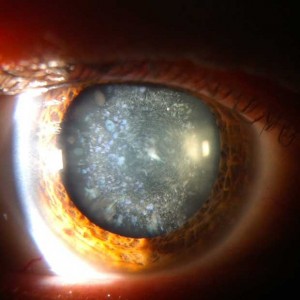 A chemical that could be used in eye drops to reverse cataracts has been identified by a team of US scientists.
A chemical that could be used in eye drops to reverse cataracts has been identified by a team of US scientists.
The researchers, from UC San Francisco (UCSF), have found a way to dissolve steroid-based drug – ‘compound 29’ – a derivative of lanosterol. The team hoped that this would prevent the misfolding and clumping together of the proteins, called crystallins, that are responsible for maintaining the transparency and flexibility of fibre cells. The flexibility of eye muscles allows them to focus on objects at different distances, they noted.
Published in the journal Nature, the findings could herald a new, more practical type of eye drop-based cataract treatment that could prevent patients from undergoing surgery.
Register now to continue reading
Thank you for visiting Optician Online. Register now to access up to 10 news and opinion articles a month.
Register
Already have an account? Sign in here
